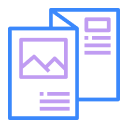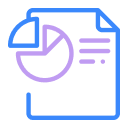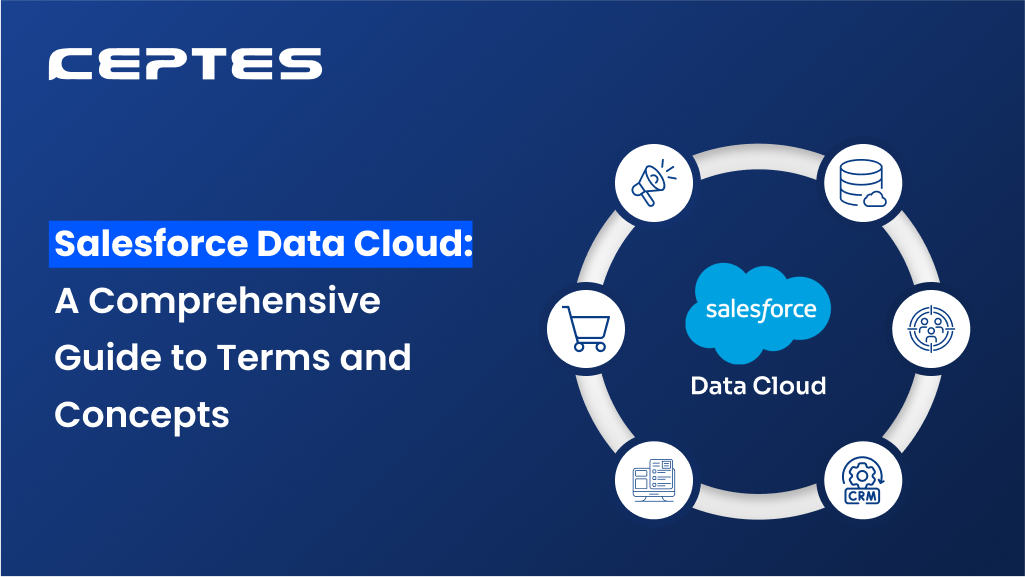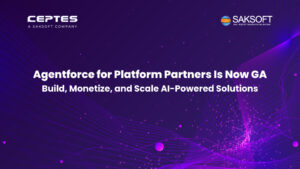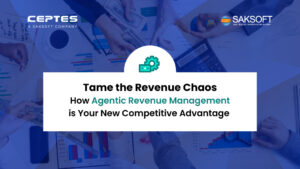Salesforce Data Cloud is a powerful platform that helps businesses transform raw data into actionable insights. By prioritizing data sources, unifying profiles and harmonizing data, it creates a comprehensive view that drives personalized experiences.
Core Concepts
Salesforce Data Cloud is a powerful tool that helps businesses unlock the full potential of their customer data. It brings together information from various sources, creating a single, unified view of each customer. By harnessing this data, companies can gain deeper insights, make smarter decisions, and deliver personalized experiences that drive customer satisfaction and loyalty.
Data Spaces:
These are virtual containers that organize data based on business units, brands, or regions. For instance, a retail company might have separate data spaces for online and brick-and-mortar operations.
Example: A company could have separate data spaces for customer data, financial data, and marketing data, each with specific permissions and rules to ensure that only authorized users can access and manipulate the data. This segmentation helps in maintaining data integrity and security while enabling efficient data management.
Data Sharing:
Securely share specific datasets with external partners for collaboration, enabling seamless data exchange.
Example: A financial services company might share customer demographic data with a marketing agency while protecting sensitive financial information.
Data Streams:
Think of a continuous flow of data from diverse sources, such as social media, website traffic, and CRM systems. Data streams feed information into Data Cloud.
Example: A retail company might have data streams for website clicks, product views, purchase transactions, and customer support interactions.
Data Ingestion and Transformation
Data ingestion in the Salesforce Data Cloud Is the process of gathering and importing data from various sources like databases, files, and real-time streams into a centralized location. This collected data is then transformed into a usable format for analysis and insights. By efficiently bringing in data from different systems, businesses can create a comprehensive view of their customers, operations, and market trends. This unified data foundation empowers organizations to make informed decisions, identify new opportunities, and optimize their processes.
Data Lake Objects:
This is where raw, unprocessed data lands when it first enters Data Cloud. It’s like a digital warehouse for incoming information.
Example: A company may have a DLO that contains all customer interaction logs from various channels such as emails, chat conversations, and social media posts. These logs are stored in their original format, enabling data scientists and analysts to perform complex queries and analysis directly on the raw data.
Data Transformation:
Cleanse, enrich, and structure data to make it usable for analysis. This involves handling missing values, correcting inconsistencies, and creating new fields.
Example: A retail company that collects customer data from multiple sources like online purchases, in-store transactions, and social media interactions. Initially, this data might be inconsistent and unstructured. Through data transformation, the company can clean and normalize this data, such as standardizing date formats, merging duplicate records, and converting text-based purchase descriptions into categorical data.
Data Modeling:
Organize data into a structured format, similar to creating a database schema. This facilitates efficient querying and analysis.
Example: A retail company might create data models for customers, products, orders, and sales. These models define the relationships between different data elements and ensure data consistency.
Data Exploration and Analysis
Data Graphs:
Visualize relationships and patterns within your data. These interactive diagrams help identify trends and correlations.
Real-Time Data Graphs:
Dynamic visuals that update instantly, providing real-time insights into customer behavior and business performance.
Data Explorer:
Dive deep into your data to uncover hidden patterns and trends. This tool allows you to explore, analyze, and visualize data in various ways.
Example: A marketing team can use the Data Explorer to analyze customer purchase history and identify trends in product preferences. They can then use these insights to create targeted marketing campaigns.
Building a Unified Customer View
A Unified Customer View in SFDC Data Cloud is an approach that consolidates all customer data into a single, comprehensive profile. This view combines data from various touchpoints and channels, providing a 360-degree perspective of each customer. By integrating information such as purchase history, interactions, preferences, and behaviors, businesses can gain deeper insights into their customers’ needs and motivations. This holistic understanding enables personalized marketing, improved customer service, and more informed decision-making, ultimately enhancing the overall customer experience and fostering stronger customer relationships.
Identity Resolution:
Merge data from different sources to create a single, accurate customer profile. This ensures you have a complete picture of each customer, even if they interact with your brand through multiple channels.
Example: A customer might interact with a brand through their website, mobile app, and in-store visits. Identity resolution combines data from these sources to create a unified profile, even if the customer uses different email addresses or devices.
Profile Explorer:
Gain a comprehensive view of individual customers. Explore their interactions, preferences, and purchase history to understand their needs better.
Advanced Analytics and AI
Salesforce Data Cloud’s advanced analytics capabilities, powered by AI, enable businesses to uncover deeper insights, predict future trends, and optimize decision-making. By utilizing predictive modeling, creating custom AI models, and integrating with external large language models, organizations can harness the full potential of their data and gain a competitive edge.
Calculated Insights:
Derive new metrics from existing data to gain deeper insights. For example, calculate customer lifetime value or product profitability.
Streaming Insights:
Analyze data as it flows in, enabling real-time decision-making. This helps you respond quickly to changes in customer behavior or market trends.
Einstein Studio AI Models:
Leverage AI to build predictive models and uncover hidden patterns in your data. For example, predict customer churn or product recommendations.
Example: A retail company can build a model to predict which customers are most likely to respond to a new marketing campaign. By leveraging historical data and machine learning algorithms, the model can analyze past interactions, purchase history, and engagement metrics to identify high-potential customers. This targeted approach helps the company optimize marketing efforts and increase campaign effectiveness.
Data Actions
Data actions in Salesforce Data Cloud enable businesses to trigger and automate specific actions based on real-time data events. This functionality allows for seamless integration with various systems and platforms, enabling immediate responses to changes in data.
- Automate tasks based on specific data events. For example, send a welcome email to new customers or trigger a loyalty program reward.
Example: A data action can be set up to automatically send a notification to a sales team when a high-value customer interacts with a marketing campaign, or to update customer records in real-time as new data is ingested. This real-time responsiveness ensures that businesses can act quickly on important data insights, improving operational efficiency and customer engagement.
Advertising Integrations:
Connect with advertising platforms to create targeted campaigns based on customer data. This helps deliver relevant ads to the right audience.
Segmentation
Segmentation is a crucial strategy in the Salesforce Data Cloud that involves dividing a large customer base into smaller, more manageable groups based on specific criteria such as demographics, behavior, or purchasing patterns. This allows businesses to tailor their marketing efforts and product offerings to meet the unique needs of each segment. Effective segmentation leads to more targeted and relevant communications, higher engagement rates, and improved conversion rates. By understanding and addressing the distinct characteristics of each segment, businesses can deliver more personalized and effective customer experiences.
- Divide customers into groups based on shared characteristics, such as demographics, behavior, or preferences. This allows for targeted marketing campaigns.
Example: A clothing retailer might segment customers into groups like “Young Fashion Enthusiasts,” “Family Shoppers,” or “Luxury Buyers.”
Einstein Segments:
Use AI to automatically create customer segments based on complex patterns in your data.
Einstein Lookalike Segments:
Identify new customers similar to your existing high-value customers to expand your reach.
Activation
Activation in Salesforce Data Cloud transforms raw data into actionable insights, enabling businesses to engage customers effectively. By leveraging activation strategies, companies can personalize experiences, automate marketing, and enhance customer interactions, driving growth through data-driven decisions.
Example: A fashion retailer segments customers by purchase history and style preferences, then activates this data with personalized product recommendations via email and social media.
Conclusion
Salesforce Data Cloud is a game-changer for businesses looking to harness the full potential of their data. By unifying disparate data sources, enabling real-time insights, and leveraging AI-driven analytics, it empowers organizations to deliver personalized and data-driven customer experiences. Understanding the key terms and concepts of Data Cloud is essential to unlocking its full potential and driving business success.
Ready to implement Salesforce Data Cloud for your business? Contact us today to explore how our experts can help you maximize your data strategy and accelerate your digital transformation.
FAQ:
Q.1 How does Data Cloud handle real-time data processing?
Salesforce Data Cloud leverages streaming data ingestion and AI-based processing to capture, analyze, and act on customer data in real time, enabling businesses to make instant, data-driven decisions.
Q.2 What are the key components of Salesforce Data Cloud?
The main components include Data Ingestion, Identity Resolution, Data Harmonization, Data Activation, and AI-driven insights, ensuring a unified and actionable customer view.
Q.3 Is Salesforce Data Cloud secure and compliant with data regulations?
Yes, Salesforce Data Cloud follows stringent security protocols and compliance standards such as GDPR, CCPA, and HIPAA, ensuring data privacy and protection.

Nilamani Das
Nilamani is a thought leader who champions the integration of AI, Data, CRM and Trust to craft impactful marketing strategies. He carries 25+ years of expertise in the technology industry with expertise in Go-to-Market Strategy, Marketing, Digital Transformation, Vision Development and Business Innovation.








